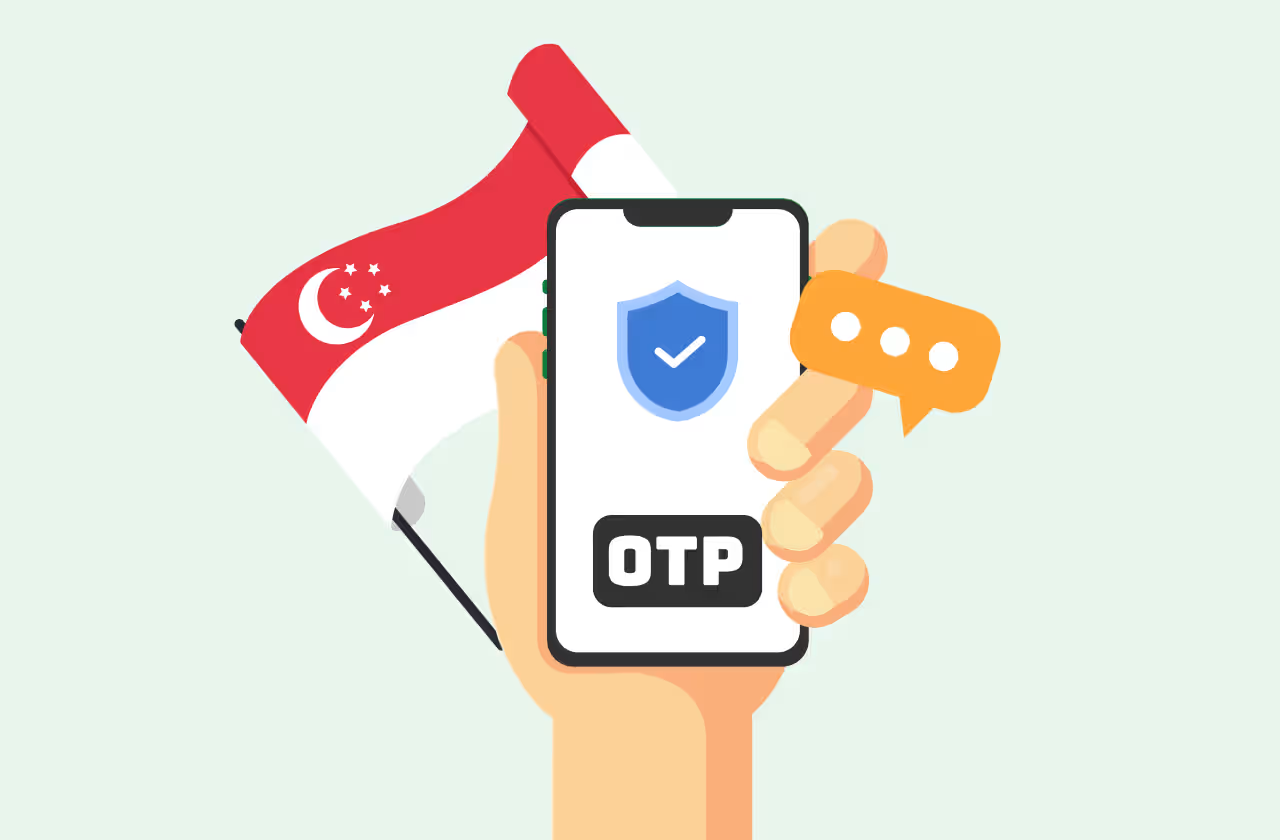Key Takeways
- OTP verification optimize user experience and protects user data
- It is strongly suggested to implement two factor authentication with OTP verification
- Use passwordless authentication to enhance user experience
- Use OTP authentication for new user registration and user verification
- Use a reliable OTP service provider with global reach
In today's digital landscape, ensuring secure user authentication is a top priority for businesses. One effective method for verifying user identity is through One-Time Password (OTP) verification. By requesting users to provide a unique OTP delivered via SMS, businesses can confirm the ownership of a phone number and enhance security measures.
In this article, we will explore the best practices for implementing OTP verification, optimizing user experience, protecting user data during the authentication process and how to enable DLT SMS i.e. sending an OTP without DLT registration in India using Message Central.

Why Use OTP Verification?
Before diving into the best practices, let's understand the significance of OTP verification. OTP verification serves multiple purposes, including:
- Two-Factor Authentication: In addition to traditional username and password combinations, OTP verification adds an extra layer of security, ensuring that the person accessing the account is the rightful owner.
- Phone Number Verification: For services that rely on a user's phone number as their primary identifier, OTP verification allows users to prove their identity by entering the OTP received via SMS. This method can be combined with a PIN to create a two-factor authentication system.
- Account Recovery: When users lose access to their accounts, OTP verification can be used as a method of account recovery. By sending an OTP to the user's registered phone number, businesses can verify the user's identity and grant them access to their account.
- Payment Confirmation: Payment systems often require additional authentication for security purposes. Many banks and credit card issuers utilize SMS OTP as a means of confirming the payer's identity and ensuring secure transactions.
Now that we understand the importance of OTP verification, let's explore the best practices for implementing this process.
Best Practices for OTP Verification
1. Implement Two-Factor Authentication
OTP verification is an effective method for implementing two-factor authentication (2FA). By combining something the user knows (e.g., username and password) with something they have (e.g., the OTP received via SMS), businesses can significantly enhance security measures. Implementing 2FA reduces the risk of unauthorized access and protects user data.
2. Enable Password less Authentication
In addition to traditional username and password authentication, OTP verification enables password less authentication. By relying on OTPs sent via SMS, businesses can eliminate the need for users to remember complex passwords. This not only improves user experience but also reduces the risk of password-related security breaches.
3. Prevent Bots and Spams with OTP Verification
One of the key advantages of OTP verification is its ability to prevent bots and spams using OTP SMS providers. By requiring users to enter a unique OTP received via SMS, businesses can ensure that only legitimate users are accessing their services. This adds an extra layer of security and protects against automated attacks.
4. Global Verification with OTP
OTP verification provides a globally accessible method for user verification. Regardless of location, users can receive OTPs via SMS and complete the verification process. This global reach enhances user convenience and enables businesses to cater to a diverse user base.
5. New User Registration Using OTP
When onboarding new users, OTP verification can streamline the registration process. By requesting users to enter the OTP received via SMS, businesses can ensure that the provided phone number is valid and associated with the new user. This helps prevent fraudulent registrations and enhances the overall security of the platform.
6. User Verification with SMS OTP
In situations where user verification is necessary, SMS OTP can serve as a reliable method. Whether it's verifying user identity for account recovery or confirming important transactions, SMS OTP provides an extra layer of security and reassurance. By employing OTP verification, businesses can maintain the trust of their users and protect their sensitive information
7. Choose a Reliable OTP Service Provider When implementing OTP verification
When implementing OTP verification, it is crucial to choose a reliable OTP service provider. Look for a provider that offers a secure and robust infrastructure, reliable delivery of SMS messages, and comprehensive API documentation. Be sure to assess factors such as message delivery speed, global coverage, and customer support to ensure a smooth and secure OTP verification process.
Conclusion
OTP verification is a powerful tool for ensuring secure user authentication. By implementing the best practices outlined in this article, businesses can optimize the user experience, protect user data, and prevent unauthorized access. Remember to implement two-factor authentication and password less authentication. Additionally, by preventing bots and spam, enabling global verification, and choosing a reliable OTP service provider, businesses can strengthen their security measures and provide users with a seamless and secure authentication process.










